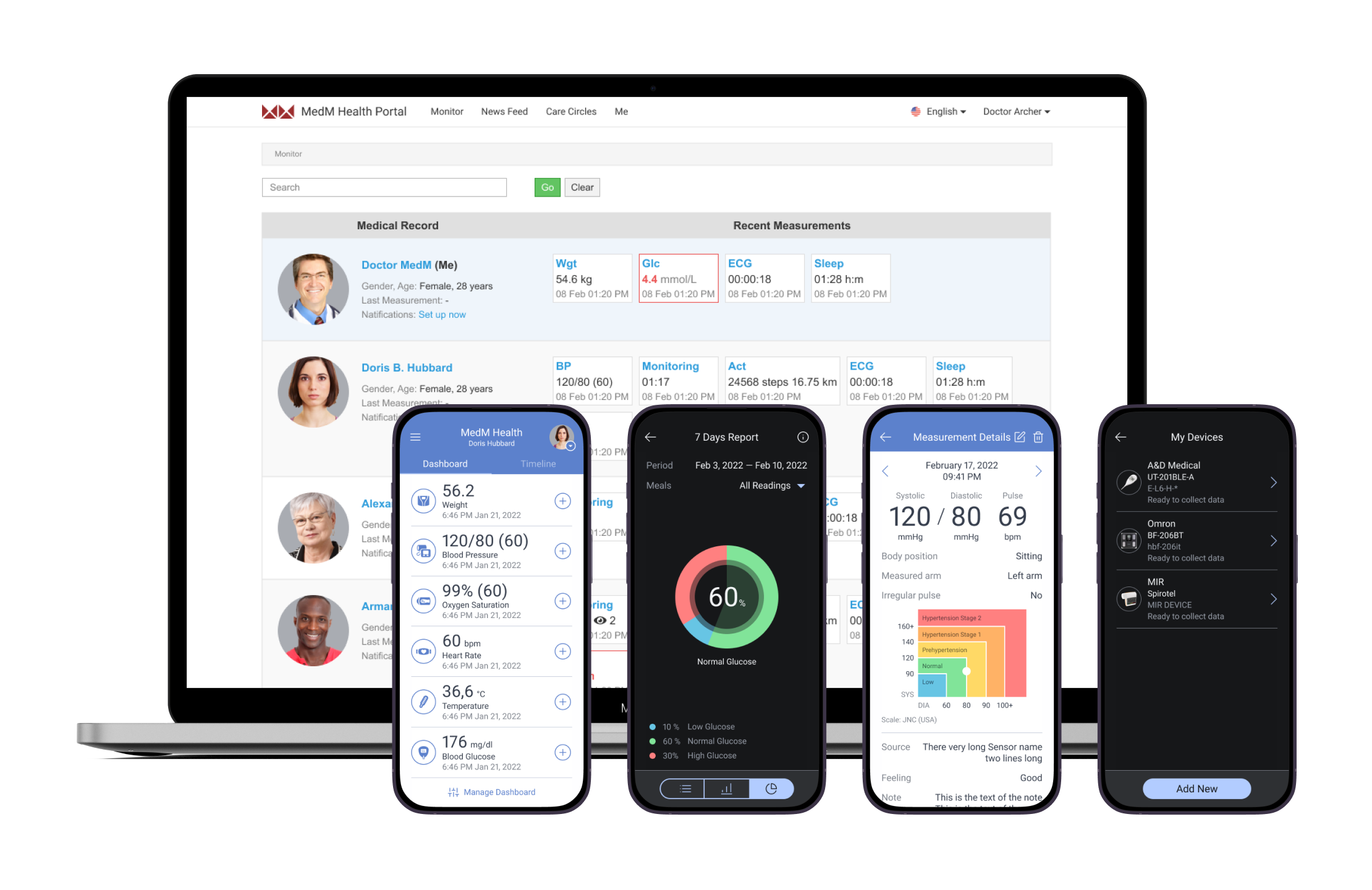Cutting-edge RPM Software: Reinventing Patient Surveillance in Healthcare
Cutting-edge RPM Software: Reinventing Patient Surveillance in Healthcare
Blog Article
The Future of Healthcare: Remote Individual Keeping An Eye On Simplified
As health care continues to evolve, one location that holds enormous pledge is remote person monitoring. With a focus on enhancing patient end results and simplifying health care shipment, remote monitoring is positioned to change the sector.
Advantages of Remote Person Tracking
Remote person tracking presents a multitude of advantages for both health care carriers and clients alike. In addition, remote client monitoring improves the total quality of treatment by giving a much more comprehensive and alternative sight of patients' health and wellness standing beyond conventional in-person visits.
Additionally, remote person tracking can cause better client end results and satisfaction. Patients can appreciate the ease of obtaining care in the comfort of their own homes while still knowing that their health and wellness is being carefully checked. This can lead to raised patient interaction and adherence to treatment plans, ultimately resulting in much better health and wellness outcomes. In addition, remote surveillance can lower the requirement for regular hospital check outs, decreasing health care prices for both clients and service providers. In general, the advantages of remote individual monitoring are clear, making it a useful tool in modern-day medical care delivery.
Innovation Driving Remote Monitoring
In the world of contemporary healthcare, technical improvements play a critical duty in driving the development and effectiveness of remote person tracking. The integration of cutting-edge innovations such as wearable devices, mobile applications, and cloud-based systems has reinvented the way doctor remotely take care of and keep an eye on patient health and wellness - software for remote patient monitoring. These modern technologies allow continual real-time monitoring of crucial signs, medicine adherence, and various other important wellness data, permitting timely interventions and individualized care strategies
One trick innovation driving remote surveillance is the Internet of Points (IoT), which enables smooth connectivity in between medical tools and healthcare systems. IoT tools such as smartwatches and wireless sensing units transmit and gather client data to central systems, promoting remote surveillance from anywhere in the world. Artificial intelligence (AI) and artificial intelligence algorithms even more improve remote monitoring by evaluating vast quantities of person information to detect patterns, anticipate health and wellness patterns, and sharp doctor to prospective issues.
Effect On Medical Care Distribution
With the assimilation of sophisticated modern technologies driving remote person surveillance, the effect on healthcare delivery is becoming transformative and increasingly profound. Remote person surveillance permits health care carriers to supply even more proactive and customized care to people, resulting in boosted wellness results and decreased medical facility admissions. By remotely tracking essential indicators, signs, and medication adherence, medical care experts can step in early, preventing complications and boosting the general top quality of care.
Moreover, remote surveillance improves accessibility to find health care services, specifically for individuals in underserved or rural areas. Individuals can receive continual tracking and assistance from their homes, getting rid of the requirement for frequent in-person brows through. This not only conserves time and minimizes costs for both people and health care look at this web-site centers however additionally lessens the risk of direct exposure to contagious diseases, a crucial consideration in the current medical care landscape.
Additionally, remote individual surveillance enables doctor to better focus on and designate resources care based on real-time data. By recognizing high-risk patients and stepping in without delay, medical care shipment comes to be a lot more efficient and reliable, ultimately resulting in a much more lasting and patient-centered healthcare system.
Improving Person Results

In addition, RPM enables proactive management of persistent problems, lowering the chance of severe exacerbations and health center readmissions. People profit from boosted comfort and convenience, as they can get care in their own homes while staying attached to their doctor. This constant tracking not only enhances patient complete satisfaction but also cultivates a feeling of empowerment and interaction in their very own wellness monitoring.
Future Trends in Remote Tracking
Embracing cutting-edge modern technologies useful content in remote individual tracking is shaping the future landscape of medical care shipment. The future trends in remote surveillance are anticipated to transform the way medical care is supplied, making it much more patient-centric and reliable. One significant pattern is the boosted usage of wearable tools and sensing units to collect real-time data, enabling doctor to keep an eye on patients constantly without the need for regular in-person gos to. These tools can track important indicators, medication adherence, and task levels, supplying a comprehensive sight of the patient's health and wellness standing.

Moreover, telehealth systems are becoming a lot more sophisticated, permitting digital examinations, remote medical diagnosis, and remote client checking all in one incorporated system (rpm software). This all natural method to remote surveillance is streamlining health care shipment, enhancing client contentment, and ultimately, enhancing total quality of care
Verdict
In verdict, remote patient surveillance provides countless advantages in healthcare delivery, driven by improvements in technology. It has the prospective to boost patient results and reinvent the method medical care is delivered. Future patterns in remote tracking will certainly remain to form the landscape of healthcare, supplying possibilities for even more customized and effective individual care.
Remote client tracking offers a multitude of benefits for both health care carriers and individuals alike. Furthermore, remote client monitoring boosts the total high quality of care by giving a much more all natural and detailed view of patients' wellness condition beyond typical in-person brows through.
Additionally, remote client surveillance can lead to enhanced client outcomes and satisfaction. Remote person tracking permits health care companies to offer even more positive and customized care to people, leading to improved wellness outcomes and lowered medical facility admissions. Remote person monitoring (RPM) plays a substantial role in enhancing patient results by giving continuous, real-time data that makes it possible for healthcare suppliers to intervene quickly and readjust therapy plans as required.
Report this page